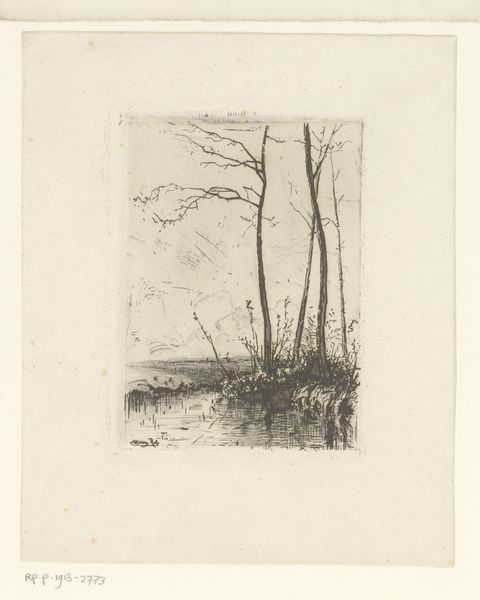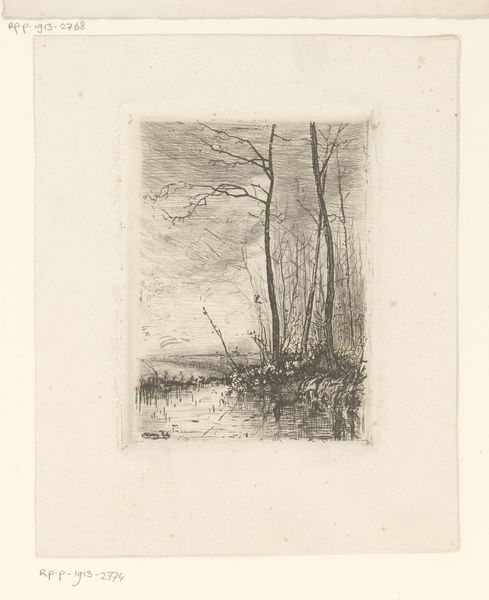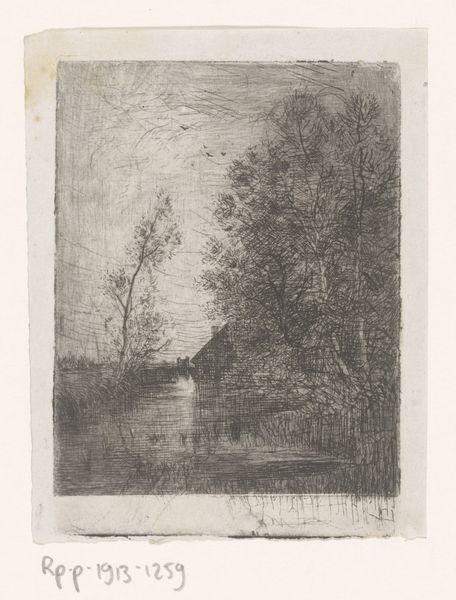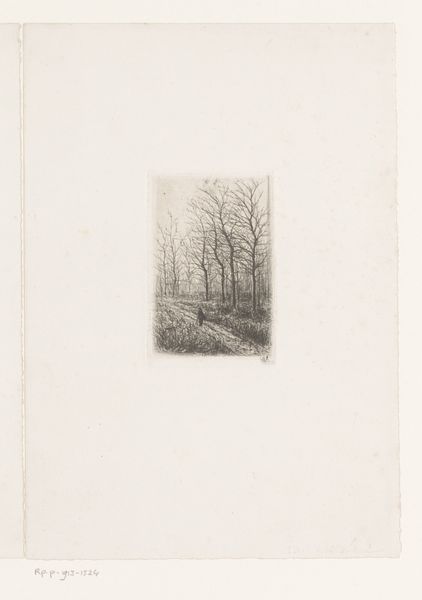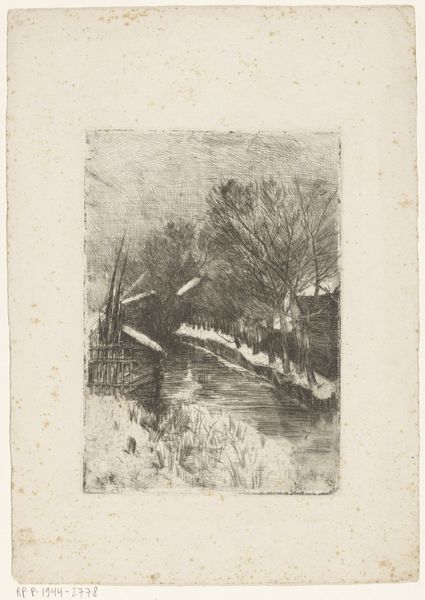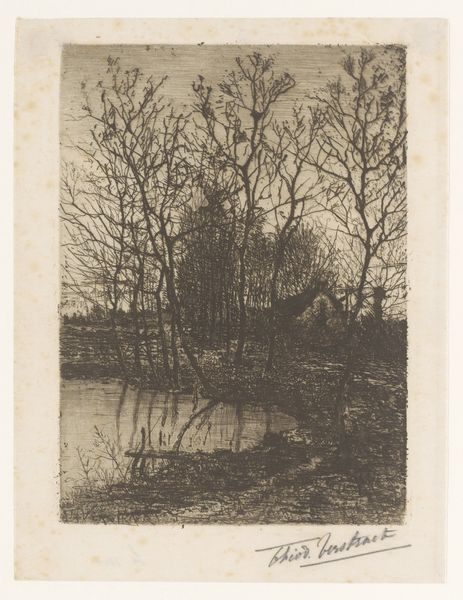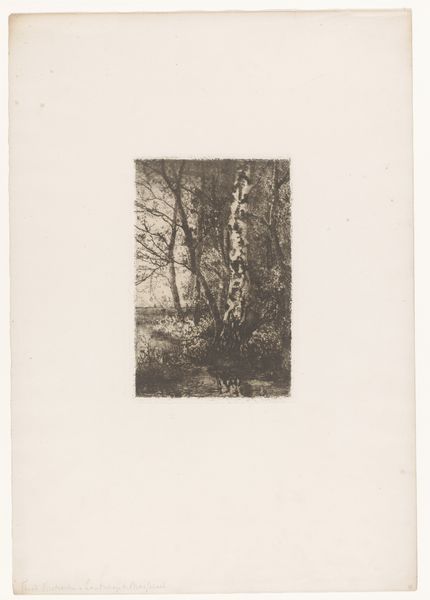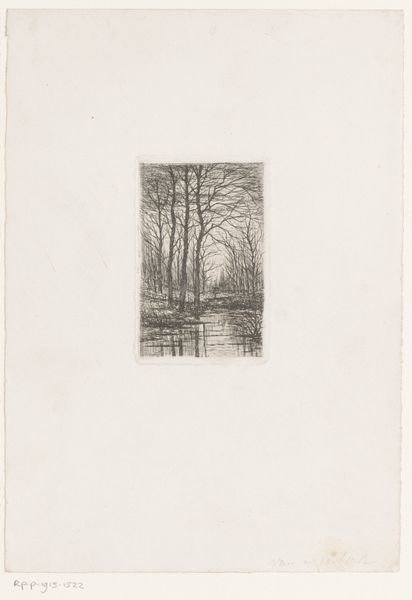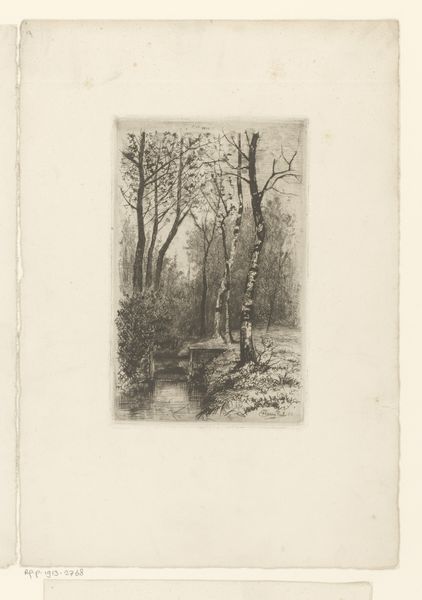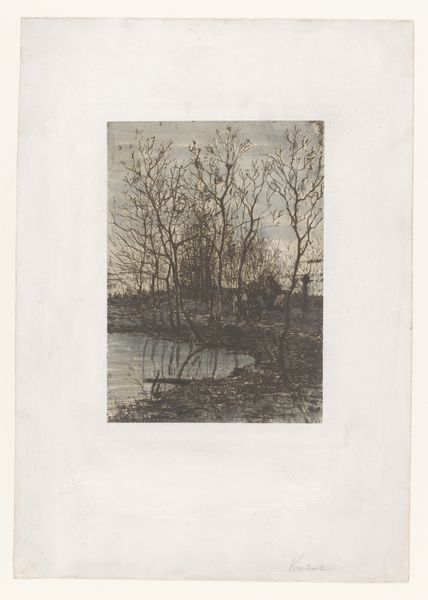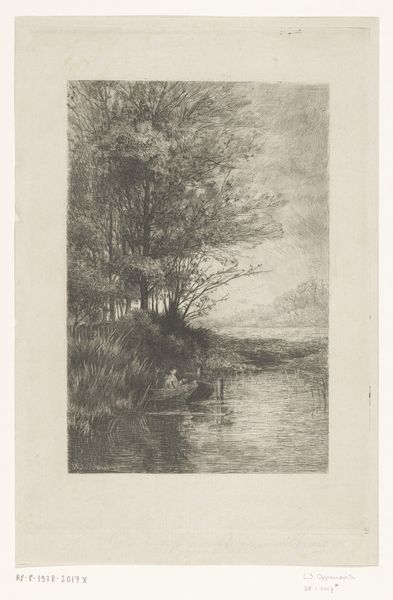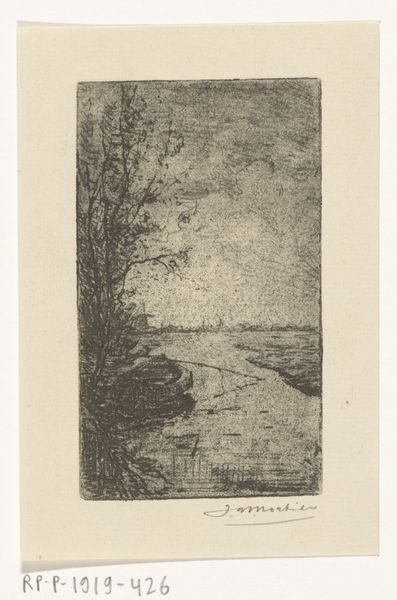
#
pencil drawn
#
tree
#
photo of handprinted image
#
aged paper
#
light pencil work
#
pencil sketch
#
old engraving style
#
personal sketchbook
#
ink colored
#
sketchbook drawing
#
sketchbook art
Dimensions: height 160 mm, width 117 mm
Copyright: Rijks Museum: Open Domain
Curator: This is "Bomen langs een vaart," or "Trees Along a Canal," a pencil drawing created in 1887 by Richard Nicolaüs Roland Holst, housed right here at the Rijksmuseum. Editor: It’s interesting; I am immediately drawn to the texture, a certain softness conveyed by the pencil work. It evokes a melancholy mood, like a quiet observation on a gray day. Curator: Absolutely. And Holst was deeply engaged with socialist ideals; his artistic practice was very rooted in challenging the status quo. This almost mundane landscape can be interpreted as a reflection of the everyday lives of working-class people, elevating their ordinary environment. Editor: I see that now. The repetition of the trees, the mirrored images in the water—there’s something almost factory-like in their formation. It definitely raises questions about how industrial labor impacts our relationship to the natural world. Do you think Holst was aware of the looming climate challenges even then? Curator: It’s difficult to say if Holst envisioned the full extent of today’s environmental crisis, but it is undeniable that this image captures a pivotal moment. It subtly critiques industrial expansion and its transformation of the natural world, hinting at an anxiety that we can definitely understand through a contemporary lens. This anxiety speaks to broader societal anxieties of class, production, and environmental awareness in art during this time. Editor: Right. And thinking about the process – this being a pencil drawing – is crucial. Pencil allows for subtlety and iteration, which connects the artist to the labor inherent to creating the scene in the work itself, mirroring labor practices from that time. Curator: Exactly, and by choosing such a "common" subject—trees along a canal—Holst encourages us to consider the beauty and importance of overlooked places and the people who inhabit them, disrupting the conventional artistic narratives centered on grand historical events or portraits of the elite. Editor: Well, I’ll certainly view canal-side trees with more thought now, thinking about Holst’s choice of pencil and this depiction of commonplace subject matter, as the materialist artist’s tool and topic for engaging a sense of ordinary dignity. Curator: I agree; situating this work in the nexus of labor movements and early environmentalism really unlocks new interpretations. It becomes not just a pretty sketch, but a quiet protest.
Comments
No comments
Be the first to comment and join the conversation on the ultimate creative platform.
